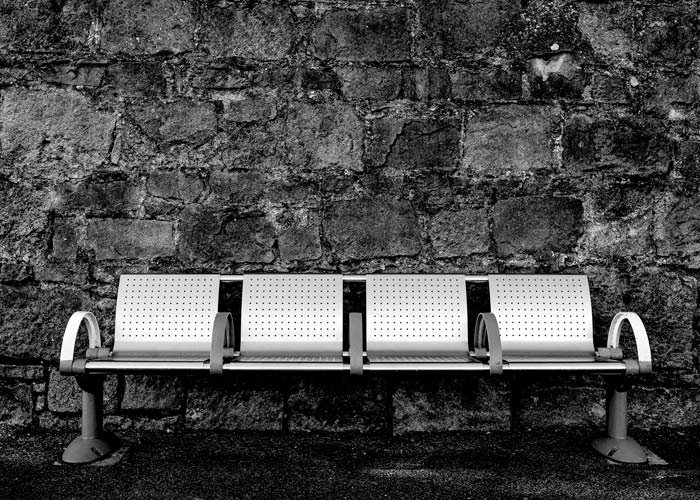Roman history
A history of street furniture dates back as far as Roman times. Roman streets used extensively for transporting mostly the means of battle from one town to the next. Accordingly, streets were adorned with utilitarian and functional milestone markers, horse troughs and tethering posts.
Later street furniture retains war theme – birth of bollards
As towns and populations grew in them, additional functional street furniture was added to control the streets. When war ships were decommissioned a new use was found for cannons, inverted with a cannonball in the muzzle became a bollard. These separated people from vehicles and also protected buildings from being damaged.
Reuse of decommissioned warships
Lighting columns were also produced from cannons to enable people to go about their business without risk of attack in darkness. Gas lamps of 1800’s became electric lamps. Some of these can still be found in Westminster, London.
Seating for weary, waiting travellers
With transport developments into rail, the eponymous weary and waiting travellers needed seating. Some of the most famous street furniture designs of benches from 1800’s have maintained iconic position.
Litter bins
Litter bins were prevalent in 1800’s and became much more used and found since pedestrianisation of town centres and increase of food that can be eaten on the street.
Our lives are full of street furniture icons
Every day we come across numerous examples of iconic and other street furniture:
- Many street signs
- Post boxes
- Phone boxes (especially red ones in London)
- Traffic lights
- Traffic signs
- Public lavatories
- Outdoor advertising hoardings and poles
- Kerbstones
- Water fountains
- Fire hydrants (particular US feature)
- Air vents from underground (also a particular US feature)
- Entrances to underground and above ground train stations
Our lives are very much outside
Social human experience is very important in our lives and street furniture plays a pivotal role in our outside social lives. Street furniture that works for all of us without discrimination can enhance our socialisation across different people in varying circumstances. Ramps that ensure easy mobility of wheelchairs, seats that are comfortable for people of all ages, lighting that is suitable to those not fully sighted, covers that guard against the elements, micro bollards to stop skateboarders abusing furniture and rather using dedicated areas are only a few examples.
Ideal characteristics for street furniture
It is critically important for street furniture to be durable, strong, long-lasting outside in the elements and free of maintenance. It is also useful that it is not expensive to produce and aesthetically pleasing over many years and decades (if possible). In today’s times, it should be environmentally friendly, and its manufacture and materials should be as carbon neutral as possible.
Stainless steel for street furniture
Stainless steel is the only material that can easily meet all the stated characteristics. Above all else it is resistant to corrosion and self-regenerates when damaged (indeed it does this and we talk about this in our blog The Magic of Stainless Steel). It also has particular aesthetic lustre that is self-maintained. Of course, stainless steel is 100% recyclable, and environmentally friendly.
Stainless steel as an art form
In recent years stainless steel has become a much-used tool for artists and sculptors. Many engineers, architects and artists have produced some outstanding work in stainless steel civil engineering projects and iconic outside sculptures.
Stainless steel bollards
Security of people and buildings in many cities in the world has become of key interest to all of us. Bollard design and manufacture has also become particularly sophisticated, incorporating variants of materials that secure the bollard and also enable it to be used for other purposes, including lighting and as an artwork. Most bollards today include stainless steel material for reasons described above.
Stainless steel fabrication
Stainless steel fabrication and light engineering is ideal means of producing street furniture and bollards. Many of the processes used are applicable (depending on the shape of the product) including welding, bending, cutting. Latest engineering advances in stainless steel laser cutting add significant capability to produce from all sorts of designs, quickly and efficiently.
Normal 0 false false false EN-GB X-NONE X-NONE /* Style Definitions */ table.MsoNormalTable {mso-style-name:"Table Normal"; mso-tstyle-rowband-size:0; mso-tstyle-colband-size:0; mso-style-noshow:yes; mso-style-priority:99; mso-style-parent:""; mso-padding-alt:0cm 5.4pt 0cm 5.4pt; mso-para-margin:0cm; mso-para-margin-bottom:.0001pt; mso-pagination:widow-orphan; font-size:10.0pt; font-family:"Calibri",sans-serif; mso-bidi-font-family:"Times New Roman"; mso-fareast-language:EN-US;}
Nijen Stainless Fabrications
At Nijen Stainless Fabrications we have been involved in producing stainless steel street furniture for more than 20 years. As leaders in stainless steel fabrication Northern Ireland, we see particular opportunity to lead the way in bringing together stainless steel and modernisation of street furniture.
